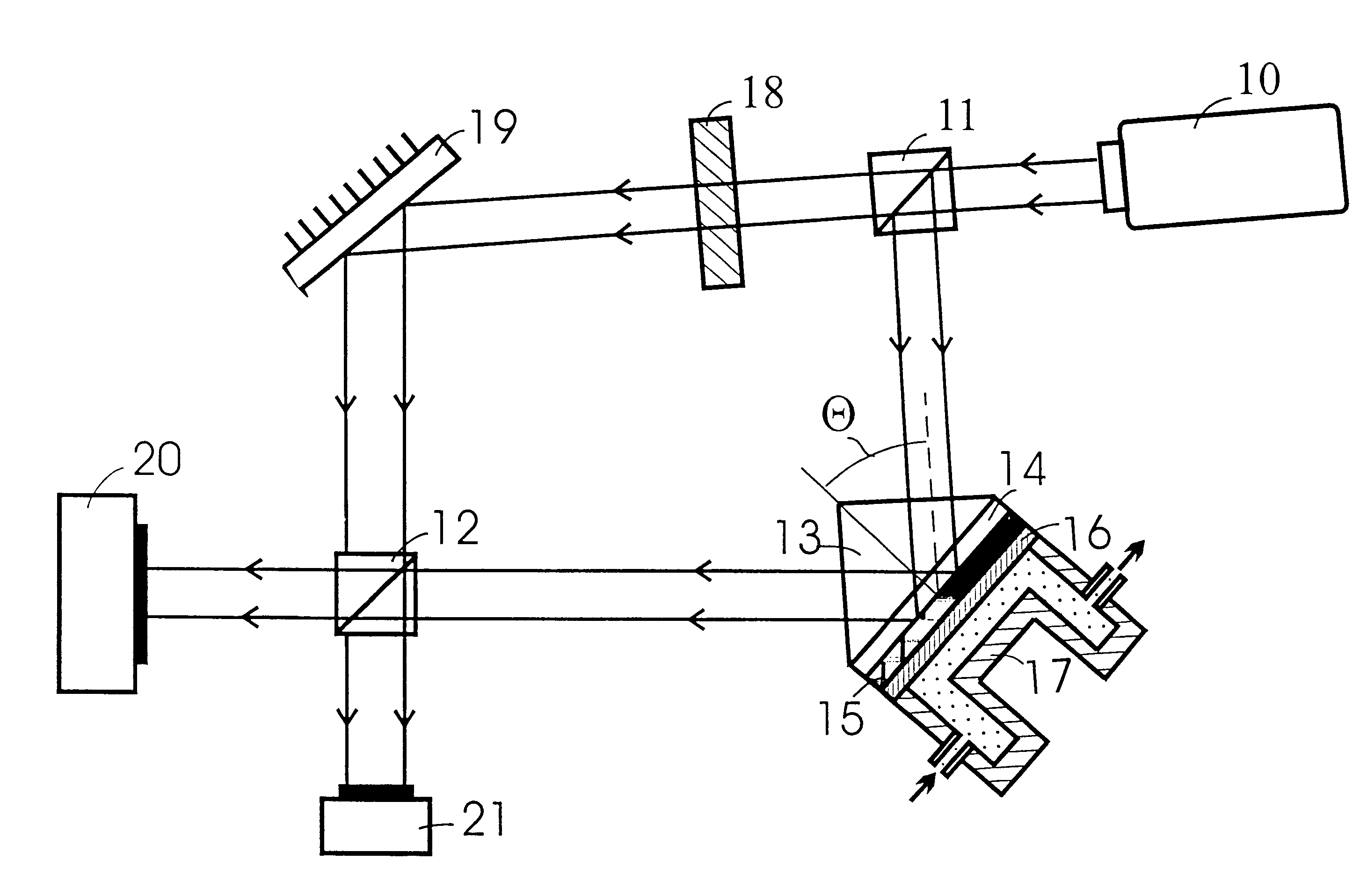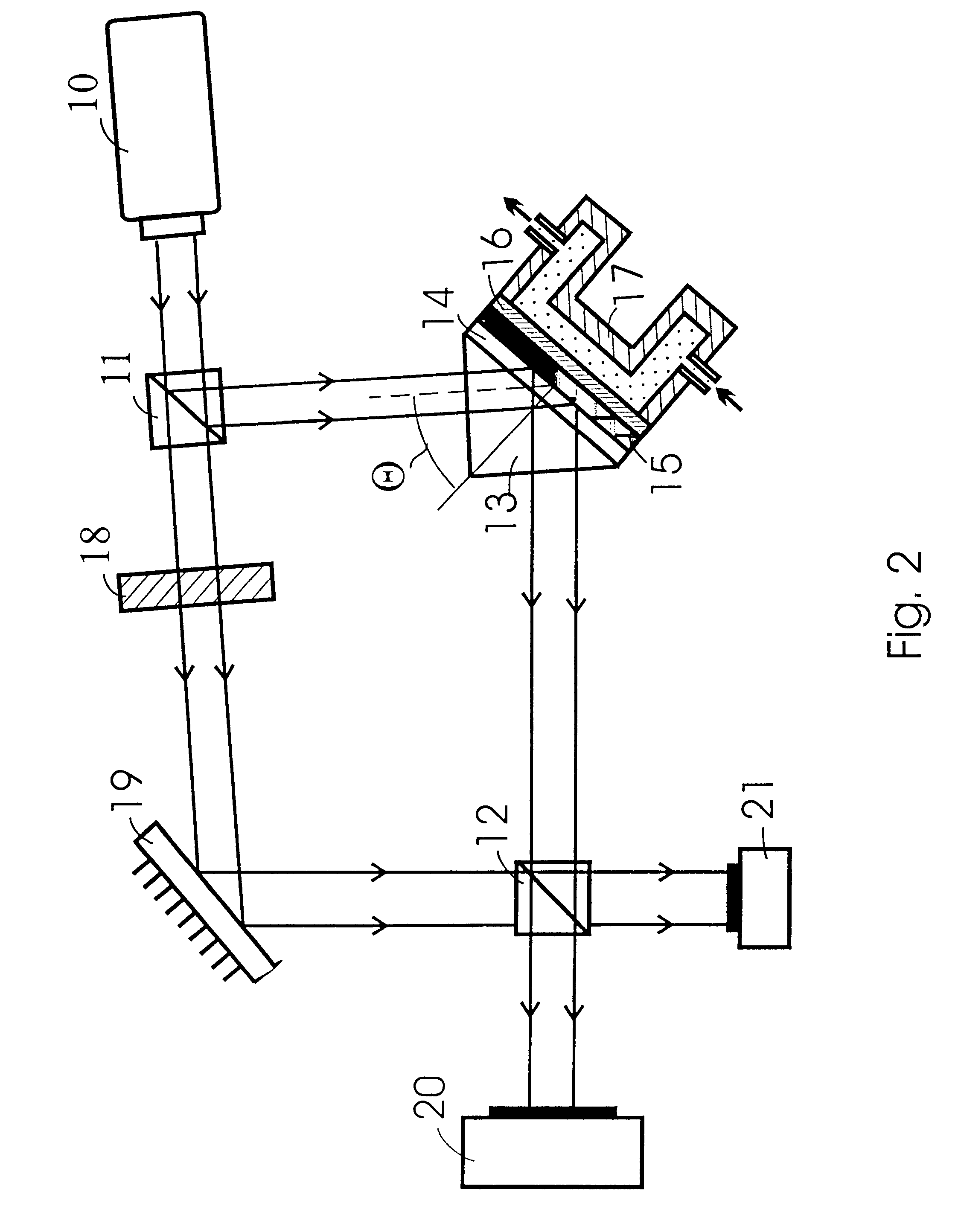Method of examining biological, biochemical, and chemical characteristics of a medium and apparatus for its embodiment
a technology of applied in the field of methods of examining biological, biochemical and chemical characteristics of a medium, can solve the problems of low accuracy of measurement, weak sensitivity of the method, insufficient reliability, etc., and achieve the effect of wide dynamic range of measurement, reduced parasitic effects, and high sensitivity
- Summary
- Abstract
- Description
- Claims
- Application Information
AI Technical Summary
Benefits of technology
Problems solved by technology
Method used
Image
Examples
Embodiment Construction
A schematic drawing of the apparatus that embodies the proposed methods is given in FIG. 1 with the following notations: 1--a radiation source; 2--a means to produce a spatial intensity distribution; 3--a facility for providing SPP-active and inactive radiation components; 4--a transparent block; 5--a metal layer; 6--a sensitive material; 7--a unit for introducing a medium under test; 8--a facility for bringing the radiation to an interference area; 9--a block to record parameters of the spatial intensity distribution.
A variant of the apparatus that embodies the proposed method is shown in FIG. 2. The notations are as follows: 10--a helium-neon laser; 11, 12--beam-splitting cubes; 13--a glass prism; 14--a glass slide; 15--a gold film; 16--a layer of antibodies; 17--a micro-cell with the flow of an antigen-containing solution; 18--a light-absorbing filter; 19--a mirror; 20--a CCD matrix; 21--a wide-aperture photodiode.
Variants of the apparatus that embodies the proposed method and us...
PUM
 Login to View More
Login to View More Abstract
Description
Claims
Application Information
 Login to View More
Login to View More - R&D
- Intellectual Property
- Life Sciences
- Materials
- Tech Scout
- Unparalleled Data Quality
- Higher Quality Content
- 60% Fewer Hallucinations
Browse by: Latest US Patents, China's latest patents, Technical Efficacy Thesaurus, Application Domain, Technology Topic, Popular Technical Reports.
© 2025 PatSnap. All rights reserved.Legal|Privacy policy|Modern Slavery Act Transparency Statement|Sitemap|About US| Contact US: help@patsnap.com



